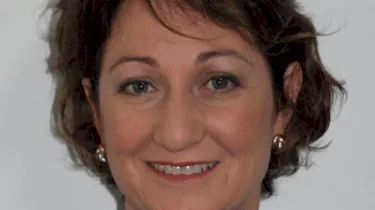Retirement
Tips from the ATO's eyes and ears on SMSF compliance
As an SMSF auditor, I see many trustees making unnecessary and often significant mistakes with their compliance upkeep. Here are some tips on how you can stay on the right side of superannuation law.
Tips from the ATO's eyes and ears on SMSF compliance
As an SMSF auditor, I see many trustees making unnecessary and often significant mistakes with their compliance upkeep. Here are some tips on how you can stay on the right side of superannuation law.

Building an SMSF is like building a car. You need to follow a series of steps (and in the right order), you can’t leave anything out, and you need to know exactly what’s legal and what’s not.
In a lot of cases, this is why you should leave SMSFs to the professionals. They’d know, for example, that an SMSF must now be established before registering for an ABN, which means:
● it must already have both trustees and members
● the trust deed has to be signed, dated and properly executed

● the fund must be holding assets.
This creates a bit of a catch-22 situation, because the fund:
● must have a bank account to accept contributions and rollovers
● can’t establish a bank account without an ABN
● can’t get an ABN without assets.
But they’d also know how to get around it—by literally attaching $10 to the fund’s trust deed. The fund now ‘holds an asset’, and so they can apply for an ABN, open the bank account and deposit the $10 into the fund’s bank account.
(Relatively) new rules for new SMSFs
From 1 January 2015, all SMSFs need to lodge a SMSF Annual Return (SAR) in the year they were established.
In the past a new SMSF didn’t need to lodge an SAR until it held assets. But the rules have changed, and a fund can no longer avoid it by lodging a Return Not Necessary (RNN) form.
And that’s why timing is critical. Let’s say a fund is established late in the financial year, with the expectation of receiving contributions and/or rollovers. Even if it doesn’t receive anything until the next financial year, it will still need to lodge an SAR in that first year.
It would also apply with a fund whose property settlement (or other asset) is held up because a rollover has been delayed.
The Australian Taxation Office (ATO) position is clear on this point: a new SMSF should not invest money in any assets until the fund receives member rollover/s.
And trustees should wait to hear from the ATO before investing. If everything is okay, the SMSF will appear on SuperFundLookup (SFLU) within seven days. Any problems with the registration can affect the fund’s ability to receive contributions, rollovers and Superannuation Guarantee Contribution (SGC) monies from employers.
Tougher rules for all SMSFs
All new funds are now risk assessed to ensure only genuine funds enter the SMSF population. And the ATO is reviewing all new fund applications to ensure they aren’t being established to illegally access benefits.
It’s also cracking down on how fund assets are held. They want to see them correctly held by the Trustee on behalf of the SMSF, particularly the fund’s bank account.
A problem we often see during an audit is where a fund holds assets in the name of the trustee only. Depending on the circumstances, this may lead to a breach of R4.09A (“Separation of assets”).
Here’s how fund assets should be held.
● For a corporate trustee, all investments should be held in the correct corporate trustee name with correct designation account name.
○ Right: ABC Pty Ltd <ABC Super Fund A/C>
○ Wrong: ABC Pty Ltd <Super Fund Account>
● For individual trustees, all investments should be held in the correct name of at least one individual trustee.
○ Right: John White <ABC Super Fund A/C>
○ Wrong: John White <Super Fund A/C>
The Australian Securities and Investments Commission (ASIC) is now advising the ATO of all corporate trustees being deregistered. These trustees will receive a letter in 2015 from the ATO stating the fund must either be wound up or restructured to ensure the SMSF remains compliant.
Funds have six months to reply to the ATO, and if the trustee doesn’t take any action the fund will be removed from SFLU. If there’s no money in the fund, or the trustee has illegally accessed funds, trustees are urged to contact the ATO as soon as possible.
Don’t put your SMSF at risk
The ATO has already begun sending letters to trustees of new SMSFs who haven’t lodged their SAR. The trustees will then need to provide evidence of assets within 28 days of the letter date. If they don’t, the SMSF will be cancelled.
These new rules are now in force, and may apply to your funds. So don’t risk what you’ve worked so hard for.
Shelley Banton, director SuperAuditors, a firm which works with accountants, financial planners and SMSF administrators Australia-wide.

Self managed super fund
Superannuation guarantee to be paid on government paid parental leave, says ASFA
The Association of Superannuation Funds of Australia (ASFA) has hailed the government's decision to include Superannuation Guarantee payments with its Paid Parental Leave policy as a critical step ...Read more

Self managed super fund
SMSF experts advise against hasty reactions to potential super tax changes
As the Australian Government proposes a new tax measure on superannuation earnings for balances exceeding $3 million, experts from the self-managed super funds (SMSF) sector are urging members not to ...Read more

Self managed super fund
Federal government announces changes to superannuation contribution caps
The Federal Government has announced changes to the superannuation contribution caps, impacting self-managed super funds (SMSFs) and their members from 1 July 2024. Read more

Self managed super fund
SMSF Association calls for joint effort to tackle early super access
The SMSF Association is calling on a collaborative approach including the Government, the Australian Taxation Office (ATO), the Australian Securities and Investments Commission (ASIC), and the ...Read more

Self managed super fund
Rest Super members file class action over alleged insurance premium deductions
Shine Lawyers has initiated a class action lawsuit against Rest Superannuation (Rest), alleging the unlawful deduction of income protection insurance premiums from members' superannuation accounts. Read more

Self managed super fund
Debunking a superannuation tax myth: SMSF Association clarifies the impact on Aussie farms
In the ongoing debate about a proposed new tax targeting superannuation funds exceeding $3 million, the SMSF Association has stepped in to challenge claims from the Association of Superannuation Funds ...Read more

Self managed super fund
Is an SMSF right for you?
When it comes to planning for retirement, one of the most significant decisions Australians have to make is how to manage their superannuation. Read more

Self managed super fund
SMSF growth continues after pandemic peak
The statistics have begun to change coming out of the COVID-19 pandemic, according to new findings from Australian Investment Exchange Limited (AUSIEX). Read more

Self managed super fund
Superannuation guarantee to be paid on government paid parental leave, says ASFA
The Association of Superannuation Funds of Australia (ASFA) has hailed the government's decision to include Superannuation Guarantee payments with its Paid Parental Leave policy as a critical step ...Read more

Self managed super fund
SMSF experts advise against hasty reactions to potential super tax changes
As the Australian Government proposes a new tax measure on superannuation earnings for balances exceeding $3 million, experts from the self-managed super funds (SMSF) sector are urging members not to ...Read more

Self managed super fund
Federal government announces changes to superannuation contribution caps
The Federal Government has announced changes to the superannuation contribution caps, impacting self-managed super funds (SMSFs) and their members from 1 July 2024. Read more

Self managed super fund
SMSF Association calls for joint effort to tackle early super access
The SMSF Association is calling on a collaborative approach including the Government, the Australian Taxation Office (ATO), the Australian Securities and Investments Commission (ASIC), and the ...Read more

Self managed super fund
Rest Super members file class action over alleged insurance premium deductions
Shine Lawyers has initiated a class action lawsuit against Rest Superannuation (Rest), alleging the unlawful deduction of income protection insurance premiums from members' superannuation accounts. Read more

Self managed super fund
Debunking a superannuation tax myth: SMSF Association clarifies the impact on Aussie farms
In the ongoing debate about a proposed new tax targeting superannuation funds exceeding $3 million, the SMSF Association has stepped in to challenge claims from the Association of Superannuation Funds ...Read more

Self managed super fund
Is an SMSF right for you?
When it comes to planning for retirement, one of the most significant decisions Australians have to make is how to manage their superannuation. Read more

Self managed super fund
SMSF growth continues after pandemic peak
The statistics have begun to change coming out of the COVID-19 pandemic, according to new findings from Australian Investment Exchange Limited (AUSIEX). Read more








